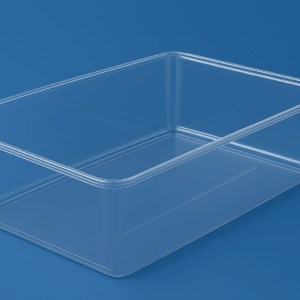$5,990.00 – $6,990.00Price range: $5,990.00 through $6,990.00
The 5-Choice Serial Reaction Time task or 5CSRTT was developed by Robbins et al (Robbins et al., 2002) to study behavioral traits associated with attention deficit hyperactivity disorder (ADHD) such as attention and impulse control.
The 5CSRTT apparatus consists of an operant conditioning chamber with 2 Plexiglas sidewalls; the aluminum front wall is rounded and contains five nose poke apertures (2.5 x 2.2 x 2.2 cm each, 2 cm above the floor)
Each apparatus you purchase from ConductScience comes with a stimulus LED light as well as an infrared nose poke sensor.
A stainless steel back wall has a food cachet installed which provides food pellets from the pellet dispenser. Infrared sensor and an LED signal light. included
The shocker floor grid allows for punishment in the experiment. The removable feces and urine tray below this grid allow for easy cleaning.

MazeEngineers empowers preclinical neuroscience research with meticulously designed, customizable behavioral apparatuses. From manual classic mazes to fully automated smart systems, we provide the tools scientists need to capture high-quality, reproducible data for studies on learning, memory, anxiety, and depression.

bool(false)

bool(false)

Mouse 5CSRTT | Rat CSRTT |
Aperature Dimension: 1.3 x 1.2 x 1.2 cm width x height x depth; 1 cm above the floor | Aperture dimension: 2.8 x 2.8 x 2.2 cm width x height x depth; 2 cm above the floor |
Interior Dimension: 20 x 20 x 25 cm | Interior Dimension: 30 x 25 x 30 cm (width x depth x height) |
5 nose poke apertures | 5 nose poke apertures |
LED visual stimuli (IR Based) | LED visual stimuli (IR Based) |
Incandescent house light | Incandescent house light |
Food magazine | Food magazine |
Shock Grid | Shock Grid |
Pellet Dispenser | Pellet Dispenser |
Feces and urine tray; removable | Feces and urine tray; removable |
Aluminum back wall | Aluminum back wall |
Isolation cubicle not included | Isolation cubicle not included |
Conductor Software
Pellet Dispenser
Shock Stimulus
Light Stimulus
Isolation Cubicle

The 5CSRTT (5-Choice Serial Reaction Time Test) Apparatus is used to assess attention and impulse behaviors processes in rodents (Robbins et al., 2002). It consists of an operant test chamber containing a curved wall with five nose poke apertures. A stimulus LED light is present in each aperture to signal food retrieval. Food can be retrieved from a food cachet connected to a food dispenser on the opposite wall of the chamber. During the task, the subject must pay attention to the apertures to detect the signal and respond correctly to obtain the food reward within a limited time window. If the subject responds incorrectly by an error of commission (responding in a hole where the signal is not presented), error of omission (failing to respond to the signal within the prescribed time limit), or premature responses (responding before the signal presentation), it is punished by a time-out period, which is a brief period of darkness. In addition, the 5CSRTT Apparatus also contains a shocker floor grid to provide punishment.
Impaired attention and impulsivity are characteristics of many mental health disorders (Robbins et al., 2002; Egeland, 2007). The 5CSRTT Apparatus can effectively be used to examine impaired attention and impulse control in rodents, which can be used as a model to understand the neurobiology of these psychiatric illnesses. During testing, the subject is placed in the apparatus and required to withhold poking its nose in any of the apertures until the appearance of the signal. Therefore, motor impulsivity can be assessed from the number of premature responses before presenting the visual signal. Additionally, perseverative responses, another form of inhibitory deficit, can also be assessed in which the subjects continue to respond at the response apertures even after signalled food presentation. The 5CRSTT Apparatus measures sustained attention by observing the subject’s ability to complete the task with the visual cue varying in location over a large number of trials. Moreover, varying the visual cue in location, duration, and timing (pre-cue delay) across trials also enables independent assessment of impulsivity. Other aspects of attention, such as selective attention, can also be examined on the 5CSRTT Apparatus by presenting distracting stimuli during the interval between trial onset and visual cue presentation.
The 5CSRTT Apparatus can also be used to investigate the effect of selective lesions, pharmacological manipulations, and diseases and disorders on attention and impulsivity in rodents.
Other apparatuses used to study attention and impulsivity in rodents:
Used to study impulsive behavior in an ADHD rodent model.
A variant on the 5CSRTT.
The 5CSRTT Apparatus consists of a chamber measuring 25 × 25 in length and width and 30 cm in height. It contains two plexiglass sidewalls, an aluminum front wall, and a stainless steel back wall. The aluminum front wall is curved and contains five nose poke apertures measuring 2.5 × 2.2 × 2.2 cm each, 2 cm above the floor. The apparatus contains an infrared nose poke sensor to detect the subject’s nose pokes into each aperture. A stimulus LED light is present in each nose poke opening as a signal for food retrieval. The food is dispensed in the back wall through a food cachet installed to provide food pellets from the pellet dispenser. The floor of the apparatus consists of a shocker floor grid to provide punishment during trials. A removable tray is present below the grid for easy removal and cleaning of urine and feces.
Clean the apparatus with 70% ethanol after each trial. Appropriately light the apparatus.
Starve the subject before trials. Cover the nose poke openings. Place the subject in the 5CSRTT Apparatus. Dispense 10-20 pellets from the food dispenser. Allow the subject to explore the apparatus and collect the food pellets within 30 minutes. Remove the subject from the apparatus and return it to its home cage. On the following three days, conduct training in the same manner; however, deliver the pellets singly at 30-second intervals and ensure that the subject consumes each pellet.
Phase 1
Remove the covers from the nose poke openings. Turn on the house light. Place the subject in the apparatus and deliver a single food pellet. Allow the subject to retrieve the pellet. Illuminate a signal light in a random nose poke opening after an inter-trial interval of 2 seconds. Allow the subject to poke its nose in the illuminated opening. Turn off the signal light and deliver a single reinforcer. If the subject pokes its nose in a non-illuminated opening, turn off the light in the apparatus for 2 seconds and do not deliver food as a time-out period. After the subject retrieves the food after a time-out or food delivery, begin a new trial. Select a random opening to illuminate each trial. Present signals in each opening equally in each session. Conduct trials until the subject meets the required criterion of 100 reinforced nose poke responses in a 30-minute test session.
Phase 2
Repeat trials in the same manner as phase 1, but place a time limit on the signal light and response period (limited hold). Initiate a 2-second delay (pre-cue delay) before illuminating the signal. Illuminate each signal for 60 seconds and set a limited hold of 60 seconds after the signal period. If the subject pokes its nose into the illuminated opening during these 2 minutes, count it as a correct response and deliver a food pellet. If the subject pokes its nose into a non-illuminated opening, count it as an error of commission and turn off the signal light and house light. If the subject does not poke its nose into any opening, count it as an error of omission, and turn off the signal light and house light. If the subject makes a nose poke into any opening during the pre-cue delay, count it as a premature response, turn off the house light, and restart the trial. Conduct trials until the subject produces 100 correct responses in 30-minute test sessions or produces 80 correct responses in 100 trials.
Phase 3
Conduct trials in the same manner as phase 2 trials, but progressively shorten the signal duration and limited hold until the signal duration reached 0.5 seconds and the limited hold reaches 5 seconds. Lengthen the time-out period to 3 seconds and the pre-cure delay to 5 seconds. Conduct trials until the subjects achieve 80% correct responses with around 15% omissions in approximately 30 training sessions.
Phase 4
Vary the duration of the pre-cue delay to 0, 3, 4, and 9 seconds for rats and 0, 2, and 4 seconds for mice across trials within each session.
The 5CRSTT Apparatus can be used to study attention and impulsivity in rodents. Different aspects of attention, such as sustained attention and selective attention, can be assessed using this apparatus. The 5CRSTT Apparatus contains five nose poke apertures, so the visual cue signal can vary between these five apertures across trials to challenge the subject’s attention. Furthermore, variations can also be presented in the visual cue duration and pre-cue delay between trial onset and visual cue presentation across trials. The apparatus contains a shocker grid floor to punish the subjects if they respond incorrectly during trials. Additionally, the house light can also be turned off for a brief moment of darkness as a less aversive form of punishment.
The 5CRSTT requires a time-intensive training period. The subject’s motivation to complete long training sessions and trials is essential for task performance. Task performance can be affected by the subject’s ability to learn and perform the task, which can also be affected by the subject’s age, gender, and strain. Improper handling of the subjects can induce stress and alter behavioral outcomes such as learning and memory. A sound-attenuating chamber may be required to keep the apparatus during testing sessions to prevent external distracting stimuli from affecting the task performance.
| Dimensions | N/A |
|---|---|
| Species | Mouse, Rat |
There are no questions yet. Be the first to ask a question about this product.